Archive

faculty development, educational technologies, intellectual curieux, info provocations
Faculty Development News This Week:

Ann Schroder and her husband, Nick Marcucci, recently travelled to England, so I begged her to share a photo for the blog. Above you see the Hare & Billet Pub, Blackheath, England.
Ann also kindly provided copy to go along with the photo. Read on:
The Hare & Billet Pub is a small, cozy establishment that has been operating since the 1800's. This is a great place to sit over a brew with the newspaper or have the midday Sunday roast dinner and watch the kite flying on the heath. There's also a pub quiz on Sunday evenings.
If all this atmosphere is not enough, the Hare & Billet Pub is also haunted.

Legend has it that, the ghost of a young woman haunts the pub. Why? Apparently, she hung herself after a tragic love affair, and, after all this time, she still has issues.
This place has everything!
Thanks Ann and Nick.
GRANTS
--Grants for Teaching and Learning Resources and Curriculum Development
Grants for Teaching and Learning Resources and Curriculum Development support projects to improve specific areas of humanities education and are intended to serve as national models of excellence. They must draw upon scholarship in the humanities and use scholars and teachers as advisers. NEH is especially interested in projects that offer solutions to problems frequently encountered by teachers
This announcement is a modification to a previous grants notice.
For more information:
HIGHER EDUCATION IN THE 21st-CENTURY
--Anytime, Anyplace and the Community College: Ten Emerging Insights
Read the abstract for this article:
Community colleges are a vital part of the larger higher education community in the United States and increasingly around the world. The more than 1,100 U.S. community colleges—not to mention the hundreds of like institutions internationally—have evolved into dynamic, comprehensive institutions that are often known for their resourcefulness in using any available tool or technique to improve and expand learning. From the early days of correspondence courses to the “colleges without walls” movement of the 1970s and 1980s, community college educators have demonstrated a commitment to extending the reach of education in their continuing efforts to make a difference for students and communities.
In today’s higher education world, asynchronous learning is the power tool. Moreover, the associated techniques for using asynchronous learning to support in-class and online instruction are bringing learning to life in new and exciting ways. This edition of the Journal of Asynchronous Learning Networks examines the role of these anytime, anyplace tools with a special focus on the characteristics of the community college movement—particularly the access, affordability, and outreach elements. Readers are treated to explorations of demographic trends, technological tools, and change-management strategies from well known researchers and practitioners. The conversation often ranges beyond community college, and that is with purpose. Community colleges are part of the broader family of education as well as a piece of the social and political fabric of the communities that they serve and thus deserve to be explored in this more complete context.
Read the article:
This is a 6-page PDF file.
--An Overview of Higher Education in the United States: Diversity, Access, and the Role of the Marketplace
This article describes the major characteristics of American higher education, noting its essential philosophical underpinnings as well as important issues that currently challenge it. An Overview of Higher Education in the United States provides snapshots of how most colleges and universities are governed and financed, their students and faculty, the nature of the curriculum and student life, and the effects of the marketplace on colleges and universities.
This publication originally appeared as a chapter in J. Forest and P. Altbach (Eds.), The International Handbook of Higher Education (two volumes), to be published by Springer (expected publication date October 2005).
An Overview of Higher Education in the United States
This is a 25-page PDF file.
--UC/21: Defining the New Urban Research University

UC21 is the University of Cincinnati's strategic plan for charting its academic course for the 21st century. Its preparation involved months of discussion and consultation at a scope never before seen on campus.
A wide range of university stakeholders -- students, full- and part-time faculty, staff, emeriti, alumni, corporate partners, donors, civic and social service leaders, and neighbors -- were invited to participate.
More than 240 people, including individuals from the community at large, worked together in a series of Town Hall meetings to discuss and draft the university's vision for its future. Additional insight came from over 2,400 people who participated in more than 90 input sessions hosted by UC colleges and units.
This report is interesting for its perspective on one institution's roadmap for the 21st-century.
Download the report for free. This is a 143-page PDF file.
Defining the New Urban Research University
FACULTY PUBLISHING
--Richard Nelson, History Department IHCC
Richard Nelson has recently published an article in The Swedish-American Historical Quarterly: "Family Nationalism in Black and White: Slaves, Swedes, and the Promise of Reconstruction." The Swedish-American Historical Quarterly 55 October 2004):218-42.
And do you know....Richard is the author of Aesthetic Frontiers: The Machiavellian Tradition and the Southern Imagination and A Culture of Confidence: Politics, Performance and the Idea of America. Currently, he is writing a monograph on the role of nationalism in historical thought.
LIBRARIES / KNOWLEDGE MANAGEMENT
--The Weariness of the Flesh: Reflections on the Life of the Mind in an Era of Abundance"
Read the abstract for this article on knowledge management:
The invention of the printing press reduced higher education’s learning-resource scarcity. Access to learning increased, and this democratization of education indirectly contributed to the idea of political democracy in the western world. As part of these political changes, equilibrium was sought between the supply of expertise needed to promote prosperity and the demand for such expertise. This equilibrium has been elusive as the world economy shifts to a reliance on intellectual capital. To complicate matters, we now live in a world of staggering information abundance. How do we mange such boundless information? One answer may lie in viewing the social character of information (how information is used) as fundamental in setting information management agendas. This article presents a holistic approach to information management as one strategy to create effective management of information that starts with the individual and ends with collective knowledge and wisdom.
Read the article:
This is a 10-page PDF document.
--Digitaizationblog
digitizationblog
digitizationblog focuses on digitization and related activities in libraries, archives, and museums, and is a source of news relevent to people who manage and implement digitization projects. Postings about new technologies and tools (particularly software), developments in metadata, and government or consortial initiaves are welcome, as are pointers to new and innovative collections of digitized and born-digital material. Even though there are several excellent sources of digitization news such as the DigiCULT Newsletter and RLG DigiNews (and this blog certainly isn’t intended to replace them), there is a lack of space on the web where implementors can share ideas and useful pointers. digitizationblog is intended to fill part of this gap.
Visit digitizationblog:
I acquired this resource from Catalogablog, 6 December 2004.
--Center for History and New Media
Since 1994, the Center for History and New Media has used digital media and computer technology to democratize history—to incorporate multiple voices, reach diverse audiences, and encourage popular participation in presenting and preserving the past. They sponsor more than a dozen digital history projects and offer free tools and resources for historians.
This site offers several features I plan to implement in my classes. One is an online Survey Builder, which allows you to create and edit surveys. I plan on using it with case study research. The second is Poll Builder, which creates polls that you can embed in your Web pages. You can select the background color for the poll and have up to 5 possible responses.
All of this is free, too! Registration required.
Center for History and New Media
PEDAGOGY
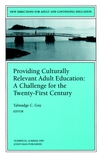
--Book: Providing Culturally Relevant Adult Education: A Challenge for the Twenty-First Century
I just acquired Providing Culturally Relevant Adult Education, an imprint of Jossey-Bass Publishers (1999. It looks like an interesting read:
Chapters:
"Culture as Context for Adult Education: The Need for Culturally Relevant Adult Education"
"Adult Learning: Moving Toward More Inclusive Thories and Practices"
"Giving Voice: Inclusion of African American Students' Polyrhythmic Realities in Adult Basic Education"
"The Quest for Visibility in Adult Education: The Hispanic Experience"
"Navajo Language and Culture in Adult Education"
"Creating a Culturally Relevant Dialogue for African American Adult Educators"
"Culturally Relevant Adult Education: Key Themes and Common Purposes"
TOOLS
--NOID or Batch Identifier Infrastructure
John A. Kunze from the California Digital Library has released noid (nice opague identifer generator commands), a Perl utility for creating persistent, globally unique names for documents, databases, images, vocabulary terms, etc. Documentation, including a tutorial,
This is a 17-page PDF file.
This resource acquired from Digitalizationblog 21 November 2004.
--SingingFish
SingingFish touts itself as a new multimedia search engine.
Try it out:
--Feedspeaker
Feedspeaker translates texts RSS Feeds into MP3 files.
This is so neat. I have been playing around with avatars (talking computer simulations)this term, so this text-to-speech synthesis utility caught my interest.
Feedspeaker is free, however, you might need to download a couple extra bits, if you don't have them ( Microsoft .NET Redistributable 1.1 and Microsoft Speech API {SAPI} 5.0). There is also a sample download of the Slashdot feed MP3'd.
Source acquired from ResearchBuzz12 December 2004.
--Google Suggest
What is Google Suggest? Read the promotional literature:
As you type into the search box, Google Suggest guesses what you're typing and offers suggestions in real time. This is similar to Google's "Did you mean?" feature that offers alternative spellings for your query after you search, except that it works in real time. For example, if you type "bass," Google Suggest might offer a list of refinements that include "bass fishing" or "bass guitar." Similarly, if you type in only part of a word, like "progr," Google Suggest might offer you refinements like "programming," "programming languages," "progesterone," or "progressive." You can choose one by scrolling up or down the list with the arrow keys or mouse.
Google Suggest
In Beta.
--Blogdigger
What is Blogdigger?
Read the literature:
Blogdigger a search engine for blogs. Blogdigger uses state of the art syndication technologies, such as RSS and Atom, to index blog content and make it available for search. Blogdigger also makes all search results available in RSS or Atom, so users can subscribe to keyword searches and automatically be notified, via the News Aggregator of their choice, of new content pertaining to their interests. Blogdigger searches thousands of RSS and Atom feeds, and is built-in to many popular News Aggregators, such as FeedDemon and NetNewsWire.
Blogdigger
Resource acquired: ResearchBuzz 12 December 2004.
--Neighborsearch
NeighborSearch will search for your keyword only in those pages which are linked from the URL you specify. So, you could enter the wordvisit, for example, and the URL http://www.inverhills.edu/, and get a list of pages relevant to visiting Inver Hills Community College. Response time is somewhat slow.
Clever!
JOURNALS
--New Journal: Foucault Studies
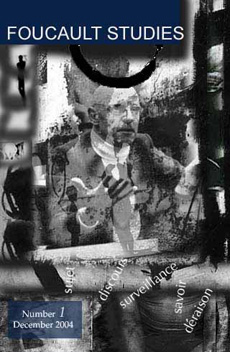
Foucault Studies is a new electronic, refereed, international journal. The editors invite submissions and cover art for Issue Number 2, which will appear in May
2005.
Even if you are not one of Foucault's disciples, he is always interesting to read, and you can see how his theoretical frameworks are being applied by scholars today.
The first, inaugural issue is curerently online.
Especially interesting, in my view, is "Defending Society From the Abnormal: The Archaeology of Bio-Power" a review essay of Foucault's lectures "Society Must be Defended"(1975-76) and "Abnormal"(1974-75) by Brad Elliott Stone, Loyola Marymount University.
NOTES
Michel Foucault, “Society Must Be Defended”: Lectures at the Collège de France, 1975‐1976, trans. David Macey, English series ed. Arnold I. Davidson (New York: Picador,
2003).
Michel Foucault, Abnormal: Lectures at the Collège de France, 1974‐1975, trans. Graham Burchell, English series ed. Arnold I. Davidson (New York: Picador, 2003).
--New Journal: Dislocate
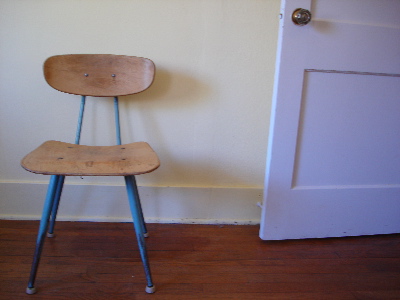
What is Dislocate?
Read on:
Dislocate was founded as a new media journal of the arts in 2001 by students in the MFA program in Creative Writing at the University of Minnesota. In the spring of 2003, a group of new students got together to brainstorm ways they could develop a high-quality print journal on campus. They spoke with faculty, staff, and students past and present. The former editors of Dislocate were interested in handing their journal off to new energy. In the fall of 2004, the newly reinvigorated Dislocate completed its first web issue. The first print issue of Dislocate is due out in spring 2005. Dislocate is committed to publishing high-quality work in many different styles and forms. We publish both established and emerging writers in each of the three genres — fiction, nonfiction, and poetry — in which University of Minnesota students specialize. Each issue publishes an interview with a featured writer who has recently visited our campus, alongside a selection of his or her work.
Take a look:
--Newly Discovered Journal: Rizomes

Read the manifesto for this journal:
We at Rhizomes oppose the idea that knowledge must grow in a tree structure from previously accepted ideas. New thinking need not follow established patterns.
Intrigued? Then visit:
Rhizomes
All journal references courtesy of CultureCat, 12 December 2004. Thanks, Clancy!
STUDENTS
--Students with Disabilities in Distance Education: Characteristics, Course Enrollment and Completion, and Support Services
Read the abstract for this article:
This study describes the characteristics, enrollment, and completion rates of studentswith disabilities and the support services they received over a three-year period. Between 1998 and 2001 a total of 604 students with disabilities enrolled in undergraduate courses at Athabasca University, which represents 1.5% of the student population. More than half (52%) had a physical disability, 20% had a learning disability, 20% had a psychological disability, 4% had some form of visual impairment, and 3% had a hearing impairment. Of these students 56.6% completed one or more of the courses in which they were enrolled. Their overall course
completion rate (including early withdrawals) was 45.9%, somewhat lower than that of the general university population. Most students received a variety of types of assistance and accommodation through the Office for Access for Students with Disabilities. Only 7% of students with disabilities received no support services. Students who received more types of support services tended to have somewhat more success in terms of course completions, and certain types of disabilities appeared to be more amendable to certain types of assistance.
Read the article:
Students with Disabilities in Distance Education
This is a 19-page PDF file.
--Improving Lives: State and Federal Programs for Low-Income Adults
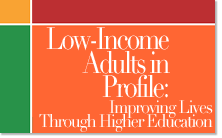
This project report address the issue of academic success for low-income adults.
Goals of Project:
To make the case to institutional leaders and policy makers that low-income adults are a vital part of the college student population, who possess unique characteristics, face significant challenges, and require greater attention and assistance than traditional students.
To identify proven policies and programs that help low-income adults meet their educational goals, as well as spotlight existing institutional and public policy barriers that impede the academic progress of these individuals.
To prompt action among institutional and policy leaders to improve the academic success of low-income adults.
Download a free PDF of the report, and sign up for e-mail notification when future project reports are released.
This is a 48-page PDF file.
--MentorNet
MentorNet is the award-winning nonprofit e-mentoring network that addresses the retention and success of those in engineering, science and mathematics, particularly but not exclusively women. Founded in 1997, MentorNet provides highly motivated proteges from many of the world's top colleges and universities with positive, one-on-one, email-based mentoring relationships with mentors from industry and academia. In addition, the MentorNet Community provides opportunities to connect with others from around the world who are interested in diversifying engineering and science
BLOG GRAB BAG
--The Illustrative Art of David Remfry
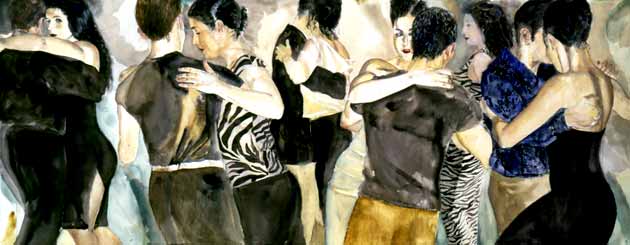
David Remfry is a talented watercolor artist who recently collaborated with fashion designer Stella McCartney.
 Stella McCartney
Stella McCartney
The Illustrative Art of David Remfry
I acquired this resource from the ever-eclectic BoingBoing, 15 December 2004.
--The Empire that was Russia: Photographs of Sergei Prokudin-Gorskii

The photographs of Sergei Mikhailovich Prokudin-Gorskii (1863-1944) offer a vivid portrait of a lost world--the Russian Empire on the eve of World War I and the coming revolution. His subjects ranged from the medieval churches and monasteries of old Russia, to the railroads and factories of an emerging industrial power, to the daily life and work of Russia's diverse population.
The photo above is the Church of Saint Dimitri, built in the 1190s in the town of Vladimir, east of Moscow in central European Russia. Note the verticality common to early Russian church architecture.
Ruminators' Ilk will resume 9 January 2005. Have a restful holiday season

Blog editor
Faculty Development News This Week:

CONFERENCES
--Innovations in the Scholarship of Teaching and Learning at the Liberal Arts Colleges
Hosted by St. Olaf College and Carleton College,Northfield, Minnesota.
April 1-3, 2005.
Read the conference announcement:
We invite you to join us for a conference that will bring together faculty members from liberal arts colleges to share innovations in the scholarship of teaching and learning. The liberal arts colleges are widely recognized for excellence in teaching and learning. Yet, the specific instructional practices that contribute to such excellence are not frequently shared publicly, nor are they often well documented.
We are particularly interested in soliciting proposals for papers and poster presentations that demonstrate a scholarship of teaching and learning in the liberal arts context. Proposals should connect a particular innovation to the existing literature on teaching and learning, and we encourage those proposals that provide an assessment of the outcomes of the innovation for student learning.
The Early Bird registration deadline is January 14. We look forward to seeing you in Northfield in April.
--2005 Great Plains Alliance for Computers and Writing Conference on April 15-16, 2005
The 2005 Great Plains Alliance for Computers and Writing Conference will be held April 15-16, 2005 and will be hosted by the English Department of Minnesota State University, Mankato. This conference is open to anyone interested in the teaching and learning of writing with computers. For more information on the conference, please visit the Web site: Computers and Writing Conference.
--Leadership with Spirit: How Colleges Prepare Students to Lead with Moral Purpose and Commitment
February 3-5, 2005, Florida State University, Tallahassee, Florida.
The 2005 Institute on College Student Values is a national conference that focuses on research and educational strategies for promoting moral and civic responsibility in college students.
Download the brochure: Conference Brochure (This is a 5-page PDF file.)
DIVERSITY

--Shinto Web Site
Read an excerpt from this site's Statement of Purpose:
No one can claim to be acquainted with Japan without understanding Shinto, Japan's indigenous religion. The two ideograms which characterize Shinto are 'shin' or 'kami' divinity and 'to' (way), the path to divinity. The Shinto faith appeared at the dawn of Japanese history emanating from the mythical Sun goddess Amaterasu Ohkami. Shinto embarked as a faith of the Japanese imperial religious system but subsequently interacted with other religions, Buddhism and Confucianism, brought to Japan from neighboring Asian countries.
As the Kodansha Encyclopedia describes it: Shinto can be regarded as a two-sided phenomenon. On the one hand it is a loosely structured set of practices, creeds and attitudes rooted in local communities, and on the other it is a strictly defined and organized religion at the level of the imperial line and the state. These two basic aspects, which are not entirely separate, reflect fundamental natures of the Japanese national character as it is expressed in sociological structures and psychological attitudes.
Visit the site.
TOOLS

--GoFish: Media Search Engine(second citation)
GoFish is a search engine that searches over 12 million media files: audio, video, mobile, and games.
Give it a try. In Beta.
--CiteULike
CiteULike is a free service to help academics to share, store, and organise academic papers that they are reading. When you see a paper on the web that interests you, you can click one button and have it added to your personal library. CiteULike automatically extracts the citation details, so there's no need to type them in yourself.
Because your library is stored on the server, you can access it from any computer. You can share you library with others, and find out who is reading the same papers as you. In turn, this can help you discover literature which is relevant to your field but you may not have known about.
--Yahoo Images
This site provides "photos and illustrations from all over the Web." Yahoo
claims it provides access to over one billion images.
--QuackTrack

QuackTrack is "the world's largest browsable blog index330,000 links to 85,000 blogs in a thousand categories." In Beta.
Libraries / Knowledge Management

--Changing Patterns of Internet Usage and Challenges at Colleges and Universities
Read the abstract for this article:
Increased enrollments, changing student expectations, and shifting patterns of Internet access and usage continue to generate resource and administrative challenges for colleges and universities. Computer center staff and college administrators must balance increased access demands, changing system loads, and system security within constrained resources.
To assess the changing academic computing environment, computer center directors from several geographic regions were asked to respond to an online questionnaire that assessed patterns of usage, resource allocation, policy formulation, and threats. Survey results were compared with data from a study conducted by the authors in 1999. The analysis includes changing patterns in Internet usage, access, and supervision. The paper also presents details of usage by institutional type and application as well as recommendations for more precise resource assessment by college administrators.
Changing Patterns of Internet Usage
--Libraries and National Security: An Historical Review
Read the abstract for this article:
The September 11, 2001, terrorist attacks launched the United States into a new era of defensive preparedness. The U.S. federal government’s first legislative action in October 2001 was the passage of the Uniting and Strengthening America by Providing Appropriate Tools Required to Intercept and Obstruct Terrorism Act of 2001 (USA PATRIOT Act). The USA PATRIOT Act introduced a greatly heightened level of government intrusion into many aspects of ordinary life, including library use. When, in the past, authorities called upon the library profession to serve national security interests in these ways, individual librarians and the profession as a whole have experienced an evolving tension between their roles as guardians of public well–being and as protectors of intellectual freedom. This is a fundamental issue, one that reflects upon the profession’s view of itself and of its place in American life. Librarians once again face this challenge. An inquiry into the similarities and differences with the past may aid in suggesting a response that is both professionally sound and individually appropriate.
Libraries and National Security
--Pulling Sense Out of Today's Informational Chaos: LiveJournal as a Site of Knowldge Creation and Sharing
This article discusses how blogging, via LiveJournal, is a new and more applicable way of managing information and creating knowledge in today’s society.
PEDAGOGY
--Anonymity is Part of the Magic: Individual Manipulation ofComputer-Mediated Communication Contexts
This article examines the power of anonymity in learning situations.
Anonymity is Part of the Magic
--Interview: McKenzie Wark, Academic Rogue
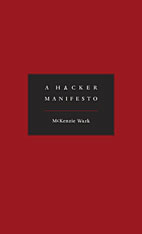
McKenzie Wark teaches media and cultural studies at the New School University in New York City. His most recent book is A Hacker Manifesto (Harvard University Press, 2004). For many years he was an active participant in the nettime listserve, and also on fibreculture, syndicate, and a few other experiments in "collaborative filtering." A Hacker Manifesto grows out of that experience, and attempts to provide a theory to go with the practice of creating and sharing free knowledge in a digital gift economy. He is the author of a number of other books, including Dispositions (Salt Books, 2002) and Virtual Geography (Indiana University Press, 1994) and was a co–editor of the nettime anthology Readme! (Autonomedia).
This interview was conducted with First Monday’s Chief Editor Ed Valauskas, stimulated in part by A Hacker Manifesto.
GAMING AND EDUCATION
--The Nature of Computer Games
This article is research on impacts of human cognitive play.
ACADEMIC CULTURE

--Six Myths about Creativity
Little is known about day-to-day innovation in the workplace. Where do breakthrough ideas come from? What kind of work environment allows them to flourish? What can colleagues do to sustain the stimulants to creativity -- and break through the barriers?
This article from Fast Company discusses six myths about creativity in work environments.
DIGITAL CULTURE

--Love Relationships on the Internet
How many people do you know who fall in love with others on the Internet and frequently use language involving phrases such as soul mates, reason for living, or my greatest love when speaking about their new relationships? These people, who are not sexual predators, became wholly entangled in thinking about the time they could re-connect on their computer screens with their cyber-loves. Then a few weeks or a few months later, when you see one of these people again and enquire after his / her new love, you are told “Oh him; it didn’t work out” or “Don’t mention her name again--ever.”
What is going on here?
This article, "I’m Not in Love…Just a Little Bit Limerent…", offers a perspective on the phenomena of cyber love affairs.
I’m Not in Love…Just a Little Bit Limerent…
This is a 4-page PDF file.
--Public Displays of Connection
Read the abstract for this article:
Participants in social network sites create self-descriptive profiles that include their links to other members, creating a visible network of connections — the ostensible purpose of these sites is to use this network to make friends, dates, and business connections. In this paperwe explore the social implications of the public display of one’s social network. Why do people display their social connections in everydaylife, and why do they do so in these networking sites? What do people learn about another’s identity through the signal of network display? How does this display facilitate connections, and how does it change the costs and benefits of making and brokering such connections compared to traditional means? The paper includes several design recommendations for future networking sites.
This is a 12-page PDF file.
--Her So-Called Digital Life
Read the beginning of this article from Wired Magazine, 2 December 2004.
Mary Hodder owns two printers, but hasn't used either one in more than a year. To tell the truth, she can't remember the last time she printed something.
Instead, Hodder, a 37-year-old internet consultant, spends almost her entire life on-screen. She carries her laptop almost everywhere she goes, traipsing from cafe to cafe looking for Wi-Fi to hook into. She downloads pirated movies and even television shows off the net, shops there and pays all her bills, too. Her blog, Napsterization.org, explores how technology alters the media landscape. Although technically based in the San Francisco Bay Area, she lives, works and plays on the web.
--Artists, Musicians, and the Internet
Surveys by the Pew Internet & American Life Project show there are 32
million Americans who consider themselves artists and about 10 million earn
at least some level of compensation from their performances, songs, paintings, videos, creative writing, and other art. The report includes special analysis of “Paid Artists,” those respondents who are musicians, writers and filmmakers and earn some income from their art.
A Project survey in November and December of 2003 finds that substantial numbers of these artists use the internet to gain inspiration, build community with fans and fellow artists, and pursue new commercial activity.
# 77% of all artists and 83% of all Paid Artists use the internet, compared
to 63% of the entire adult population.
# 52% of all online artists and 59% of Paid Online Artists say they get ideas and inspiration for their work from searching online.
# 30% of online artists and 45% of Paid Online Artists say the internet isimportant in helping them create and/or distribute their art.
# 23% of all online artists and 41% of Paid Online Artists say the internet
has helped them in their creative pursuits and careers.
# 3% of all online artists and 6% of Paid Online Artists say the internet has had a major deleterious effect on their ability to protect their creative works.
Read the full report:
Artists, Musicians, and the Internet
This is a 61-page PDF file.
STUDENTS
--Study Looks at How Latinos Identify Themselves Racially
This study is by the Pew Hispanic Center.
Study Looks at How Latinos Identify Themselves Racially
I acquired this resource from Academic Impressions, 6 December 2004.
GAMING IN EDUCATION
--Ludologica
Launched in 2003 by Edizioni Unicopli, an Italian publishing house in Milan, Ludologica. Videogames d’autore is a new series of books that honour the most significant video games of the last 40 years. Available in two formats (Monographs and Readers), these volumes discuss video games from a broad academic and critical perspective, setting characteristics, themes and techniques in context and exploring the game's significance. Focusing on one game on one series rather than an entire genre, the books dispense with the standard historical background that players know already, and cut to the heart of the game.
--Species of Spaces
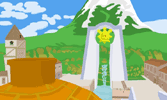
This thought-provoking article on the reality of video-game space for learning and living begins with the following quotation by Marshall McLuhan 1964.
"The artist tends to be a {person) who is fully aware of the environment.... The artistic conscience is focused on the physics and social implications of technology. The artist builds models of the new environments and new social lives that are the hidden potential of new technologies"
The bibliography for the article is also interesting:
Augé, Marc (2002) In the Metro. Minneapolis: Univ of Minnesota Press.
Augé, Marc (1999) An Anthropology for Contemporaneous Worlds. Stanford:
Stanford University Press.
Augé, Marc (1995) Non-Places: Introduction to an Anthropology of Supermodernity(Cultural Studies). New York: Verso.
Bernardi, Sandro (2002) Il Paesaggio nel Cinema Italiano Genova: Marsilio.
Lefebvre, Henry (1991) The Production of Space. New York: Blackwell Publishers.
Massey Doreen (2000) Cities Worlds. New York: Routledge.
Newman, Kim (2002) Apocalypse Movies. London: St. Martin's Press.
Olalquiaga, Celeste (1991) Megalopolis: Contemporary Cultural Sensibilities Minneapolis: University of Minnesota Press.
Sorkin, Michael (1992) Variations on a Theme Park : The New American City and the End of Public Space. New York: Hill and Wang.
Virilio, Paul (1991) The Aesthetics of Disappearance. Cambridge: MA: Semiotext(e)/MIT Press.
Kathy Willie , interlibrary loan person extraordinaire, can assist you with accessing any of these texts.
BLOG GRAB BAG
--Literary and Cultural Studies Mailing List
The English Department at the University of Pennsylvania hosts an electronic mailing list ( cfp@english.upenn.edu) and website http://www.english.upenn.edu/CFP/) for calls for papers on English and American Literature and Culture. They encourage conference or panel organizers and volume editors to find the largest possible audience for their announcements by posting them on this list and Web archive.
To subscribe to the list, address an E-mail message to upennlistserv
--Open Source Art
OPENSOURCE is an alternative art space accommodating a variety of non-traditional, community-oriented art projects and events within Champaign-Urbana, Illinois.
This site is an interesting role model for digital exhibition.
--Cup of Chicha

Cup of Chicha is an arts and culture weblog, started in January of 2002 by Nathalie Chicha, a MFA candidate in fiction at the Iowa Writers’ Workshop. In the left column, you’ll find commentary on literature, art, film, TV, and critical theory. In the right column, you’ll find navigational links and a link “cupboard,” a constantly updated index of interesting sites and articles. Click on for a list of recommended weblogs and use the to access Cup of Chicha’s past entries.
--Free Credit Reports
Soon you’ll be able to get your credit report for free. A recent amendment to the federal Fair Credit Reporting Act (FCRA) requires each of the nationwide consumer reporting companies to provide you with a free copy of your credit report, at your request, once every 12 months. The FCRA promotes the accuracy and privacy of information in the files of the nation’s consumer reporting companies. The Federal Trade Commission (FTC), the nation’s consumer protection agency, enforces the FCRA with respect to consumer reporting companies.
--Government Gazettes Online
Government Gazettes, which are published by federal governments worldwide, are the means through which the government can communicate to officials and the general public. Although most countries publish a gazette, their regularity and content varies widely, which is noted in the description of each gazette. Gazettes are useful not only to monitor the actions of the government, but also as primary source documentation in research.
I acquired this resource from Marlaine Block's NeatNewStuff, 3 December 2004.
--The Footsteps of Alexander the Great
This is the Web site for the PBS series.
The Footseps of Alexander the Great
--Paintings by Lyn Nance-Sasser

Nance-Sasser's current medium of choice is acrylic on canvas and her subject matter is very personal. Her latest work has been centered around the concept of being "blind-sided" by life,surprised by events that are out-of-our-control. Her method is to paint potentially threatening situations within a style that is reminiscent of children's art of the 1950s. Consequently the work tends to "blind-side" each viewer as they are drawn into an innocent looking canvas only to realize that there is an impending incident of doom depicted.
The illustration above is titled "The Happy Little Bird" (acrylic on canvas, 36"x28", © 2001) or L'oiseau est I. (just kidding!).
Pig Racing
Class, who is the audience for this sporting event?

I did not know pigs race but apparently they do, according to this article from The Independent(London, England), 4 September 2004.
Read the article, "Saddle-up, Whether it be on a Bull, a Horse or a Sheep, at the Annual Colorado State Fair."
I acquired this resource from Chief Blogging Officer, 3 December 2004.
--Digital Apoptosis
This is a wonderful digital photography blog.
Until next week!
Image Credits
--"Christmas Tree at Rockefellar Center, New York City,http://www.newyorksocialdiary.com/
--"Creativity," 480 x 480 pixels - 13k
www.seoconsultants.com/ just-say-no/images/log...
--"Cup Of Chicha Logo," http://www.nchicha.com/
--"Cyber LOve," users.aol.com/millsian/ Images/cyberlove.gif
252 x 43 pixels - 4k
--"HackerManifesto,http://www.hup.harvard.edu/catalog/WARHAC.html
--"The Happy Little Bird", Acrylic on canvas, 36"x28", © 2001 http://www.wtbw.net/geisha
--Japanese Carp Windsocks," http://www.k111.k12.il.us/king/images/banner.jpg
--"Knowledge," www.robotwisdom.com/ ai/timeline/pergamon.gif
268 x 267 pixels - 16k
--"Mario Brothers Solid Landscape," http://www.rgbproject.com/
--"Pigs Racing," http://www.highbeam.com/library/doc0.asp?
--"QuackTrack," http://quacktrack.com/
--"Tools," 150 x 150 pixels - 12k
www.architectureweek.com/ topics/digital.html
Faculty Development News This Week:

CONFERENCES
--TCC Worldwide Online Conference : "LOOKING BACKWARDS OR INTO THE FUTURE?"
This event is hosted by University of Hawai'I Kapi'olani Community College in association with Osaka Gakuin University, Japan and in partnership with LearningTimes.org.
April 19-21, 2005
Pre-Conference Dates: April 5-6, 2005
CALL FOR PROPOSALS
The TCC Online Conference coordinators invite faculty, support staff,
librarians, counselors, students, administrators, and consultants to
submit proposals for papers, discussions and other presentations that
address the impact of technological change, the Internet, and other
technologies on how we teach and learn in colleges and universities
worldwide.
Here are some questions to help formulate your presentations:
- Keeping up with the times -- what's the best way to do this?
- Are learning communities real or imagined? How do we sustain them?
- Which is best: face-to-face, hybrid, or online learning?
- Is there a future for learning objects, open-source software, blogs,
wikis, e-portfolios, etc, that are being touted today?
- What is the status of educational technology around the globe? Is
there a way to help one another?
- What was our profession like ten years ago and how does it compare with
today?
- What are some useful models for delivering student services online?
- How do students react to online learning and online student services?
- How will recent copyright and intellectual property laws change the way we
teach and learn? Do they need to be adjusted?
- How can today's technology accommodate diverse cultural backgrounds and
learning styles?
- Where is instructional technology headed?
- What are some technologies that we need to watch out for?
- What staff and faculty training or professional development models have
met with success?
- Is global learning a reality or myth?
- Is online learning a fad or paradigm (or both)? What is the new paradigm
for learning?
- Does the Internet help or hinder learning?
- What are the lessons learned from the past 10 years of instructional
technology and the Internet?
- Should an institution adopt a single courseware management system?
Who should determine this - faculty, IT staff or administrators?
- Are we out-of-control with technology spending? Could it be better
utilized for other institutional purposes? Did we invest our funds wisely?
- What's the best way to provide for disability access for students?
- What are the barriers to the digital divide and how can we overcome them?
PROPOSAL SUBMISSIONS
In your proposal, be sure to describe the content, goals, and expected outcomes of your presentation. For details on submitting your proposal,
go to the conference home page and click on "Proposal Submission" link: Proposal Submissions
Submissions should be in the form of a paper, discussion, poster
session or pre-conference tutorial. For details about presentation
formats, see: Presentation Information.
The deadline for proposals is December 31, 2004.
Mailing address: TCC Worldwide Online Conference (IMTS), University ofHawai'i, Kapi'olani Community College, 4303 Diamond Head Road, Honolulu, HI 96816, USA.
TCC Worldwide Online Conference
TECHNOLOGY
--IT Issues & Strategic Viewpoints in Higher Education
This article explores a study recently conducted to identify today's most pressing IT issues at colleges and universities. The study also compares the 2004 results to the 2003 results.
DISTANCE EDUCATION
--Assessing Teaching Presence in a Computer Conferencing Context
This paper presents a tool developed for the purpose of assessing teaching presence in online courses that make use of computer conferencing, and preliminary results from the use of this tool. The method of analysis is based on Garrison, Anderson, and Archer's [1] model of critical thinking and practical inquiry in a computer conferencing context. The concept of teaching presence is constitutively defined as having three categories - design and organization, facilitating discourse, and direct instruction. Indicators that we search for in the computer conference transcripts identify each category. Pilot testing of the instrument reveals interesting differences in the extent and type of teaching presence found in different graduate level online courses.
--Assessing Social Presence in Asynchronous Text-based, Computer Conferencing
Instructional media such as computer conferencing engender high levels of student-student and student-teacher interaction; therefore, they can support models of teaching and learning that are highly interactive and consonant with the communicative ideals of university education. This potential and the ubiquity of computer conferencing in higher education prompted three of the authors of the present paper to develop a Community of Inquiry model that synthesizes pedagogical principles with the inherent instructional and access benefits of computer conferencing (Garrison, Anderson, & Archer, 2000). The present article explicates one element of the model, social presence. Social presence is defined as the ability of learners to project themselves socially and affectively into a community of inquiry. A template for assessing social presence in computer conferencing is presented, through content analysis of conferencing transcripts. To facilitate explication of the scheme and subsequent replication of this study, selections of coded transcripts are included, along with inter-rater reliability figures. The article concludes with a discussion of the implications and benefits of assessing social presence for instructors, conference moderators, and researchers.
This is a 38-page PDF file.
--Critical Thinking, Cognitive Presence, and Computer
Conferencing in Distance Education
This article describes a practical approach to judging the nature and quality of critical discourse in a computer conference. A model of a critical community of inquiry frames the research. A core concept in defining a community of inquiry is cognitive presence. In turn, the practical inquiry model operationalizes cognitive presence for the purpose of developing a tool to assess critical discourse and reflection. Encouraging empirical findings related to an attempt to create an efficient and reliable instrument to assess the nature and quality of critical discourse and thinking in a text-based educational context are presented. Finally, it is suggested that cognitive presence (i.e., critical, practical inquiry) can be created and supported in a computer conference environment with appropriate teaching and social presence.
Critical Thinking, Cognitive Presence, and Computer Conferencing in Distance Education
This is a 24-page PDF file.
--Methodological Issues in Analyses of Asynchronous, Text-Based Computer
Conferencing Transcripts
Read an excerpt from this article:
This paper will explore the particular difficulties that researchers have
encountered and the advances that they have made in the struggle to extract
meaning from conferencing transcripts. It is not meant to be a meta-analysis of
results, but rather a review of the methodology. Our intent is to document the
evolution of content analysis techniques as they have been applied by us and
other researchers to analyze transcripts of asynchronous, computer mediated
conferencing in formal educational settings. Hopefully, this will facilitate the
larger goal of improving the quality of teaching and learning using this medium.
To accomplish this, we have reviewed a sample of 14 studies that are commonly
referenced in the literature (see Table 1). We hope that this will provide
subsequent researchers with a privileged starting point for their studies and
refine the application of this powerful technique.
TOOLS
--CiteULike.org
CiteULike is a free service to help academics to share, store, and organize academic papers that they are reading. When you see a paper on the web that interests you, you can click one button and have it added to your personal library. CiteULike automatically extracts the citation details, so there's no need to type them in yourself
I acquired this resource courtesy of Research Buzz, 29 November 2004.
--FeedDirect.com
FeedDirect is the premier provider of high quality general and consumer news headlines for websites.
We gather and categorize millions of articles from thousands of news sites worldwide and deliver them as topic-based Webfeeds. FeedDirect enables webmasters to enhance the experience of their sites’ visitors and increases loyalty by providing relevant, topical and up-to-date news on any area of interest.
FeedDirect is able to provide its high-quality service free of charge by including contextual, text advertisements within the Webfeeds.
--Web Site Reviewer
This site analyzes and critiques websites; looks for errors and problem areas; and make suggestions for improvement.
--Game: LEGO Worldbuilder

--Guide to Convert VHS to DVD
This guide will provide the following:
The right hardware to convert VHS to DVD
How to make sure you have enough memory
Editing techniques to create professional looking video
Professional DVD burning techniques
Software tools for making DVDs
How to connect your VCR or camcorder to a PC
The best software for authoring DVDs
The guide costs $17.00
--INCSUB
INCSUB is a new service set up partly through a frustration with current mainstream online teaching and learning technologies (& the pedagogies they inflict!) and partly through a desire to explore the possibilities that wikis, weblogs, open source CMSs and other emerging technologies offer {teachers}. Get in touch today and see what we can do for you
STUDENTS
--Community College Students Taking More Years to Complete Course Work
This article from USA Today, 28 November 2004, is devoted to the situation of many community college students today. Here is an excerpt from the article:
The notion that community college students arrive fresh out of high school, study for two years and move up to a four-year college is quietly dissolving, a survey suggests. Instead, the experience for millions of students now involves spending four or more years piecing together an education at several colleges, and many never even earn an associate's degree.
Two-thirds of community college students attend only part time, and a handful try out several colleges or enroll in two simultaneously, according to the Community College Survey of Student Engagement, out today. Meanwhile, nearly one in six students already have a bachelor's degree. "People just don't go to college like they used to," says Kay McClenney, the survey's director and an adjunct professor at the University of Texas-Austin, which sponsors the survey.
Read the article:
DIVERSITY
Fight Hate and Promote Tolerance
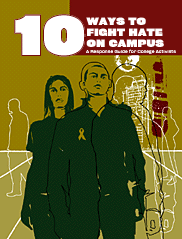
This Web site is a project of the Southern Poverty Law Center.
There are resources here for campus, work, and community.
--Ramayana
Ramayana is a beautifully illustrated comic book featuring historical and mythological characters. It has also been instrumental in imparting education on Indian culture to people worldwide.

Read the book online:
ONLINE CULTURE
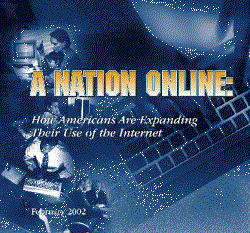
--A Nation Online: Entering the Broadband Age
A Nation Online: Entering the Broadband Age is the sixth report released by the U.S. Department of Commerce examining the use of computers, the Internet, and other information technology tools by the American people. Based on the U.S. Census Bureau’s Current Population Survey of 57,000 households containing 134,000 persons, this report provides broad-based and statistically reliable information on the ways that information technologies in general, and broadband more specifically, are transforming the way we live, work, and learn.
This is a 37-page PDF file. Also available in hypertext and WORD.

BLOG GRAB BAG
--Which Operating System are You?

Take the test and find out which one you are.
I acquired this resource from Geomblog, s7 November 2004.
--Science Daily
This site provides links to the most recent research news in science.
--Washington Calligraphers Guild

Founded in 1976, the Washington Calligraphers Guild is a nonprofit organization of approximately 500 American and international lettering artists of all skill levels, from professional scribes to enthusiastic beginners and even some non-calligraphers who appreciate the lettering and book arts.
This resource acquired from lii, 24 November 2004.
--NASA Goes Hypersonic
This is all about the NASA ScramJet.

This is interesting not only for the technology (Mach 9.8) but for how tax dollars are spent. See the video: NASA Video.bmp
--Lorum Ipsum
Have you ever wondered why Web developers dummy the Latin text, Lorum Ipsum, into their pages?
Well, this site will interest you. Read on:
Lorem Ipsum is simply dummy text of the printing and typesetting industry. Lorem Ipsum has been the industry's standard dummy text ever since the 1500s, when an unknown printer took a galley of type and scrambled it to make a type specimen book. It has survived not only five centuries, but also the leap into electronic typesetting, remaining essentially unchanged. It was popularised in the 1960s with the release of Letraset sheets containing Lorem Ipsum passages, and more recently with desktop publishing software like Aldus PageMaker including versions of Lorem Ipsum.
Find out more:
Lorum Ipsum
Fact Monster

FactMonster is an atlas, almanac, encyclopedia, and dictionary.
Until next week!
Blog Editor
Image Credits
--"American Association of Community Colleges Logo," 201 x 222 pixels - 5k
www.wscc.edu/links/
--"Ansel Adams Quote," http://www.calligraphersguild.org/scripsit.html
--"English Holly," 250 x 250 pixels - 20k
en.wikipedia.org/ wiki/Holly
--"Fact Monster Logo," http://www.factmonster.com/index.html
--"Happy Hanukkah,"230 x 297 pixels - 9k
www.waldoward.com/ cards/hanukkah.gif
--"NASA ScramJet," http://www.nasa.gov/missions/research/x43-main.html
--"NASA Video," http://www.nasa.gov/missions/research/x43-main.html
--"Nation Online Cover," http://www.ntia.doc.gov/ntiahome/dn/index.html
--"Pilgrimage," www.dropbears.com/.../ medieval_costume.htm
--"Ramayana Cover," http://www.askasia.org/students/virtual_gallery/exhibitions/
--Tolerance," http://www.tolerance.org/campus/index.jsp
--"Truus fan e Wel," Steven L. Sobel Canon
--"XP operating System," http://bbspot.com/News/2003/01/os_quiz_results.php
